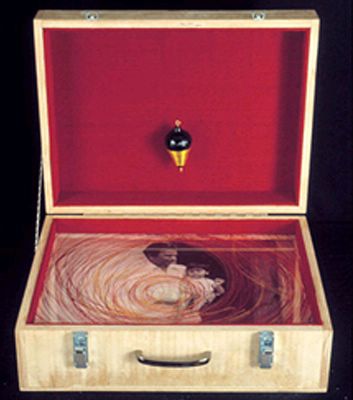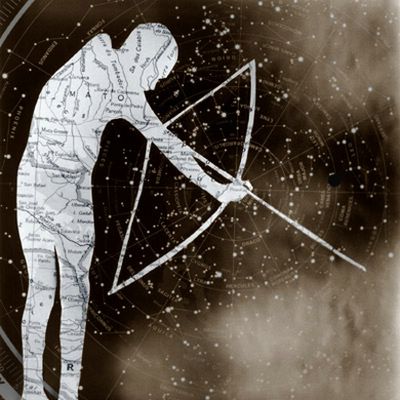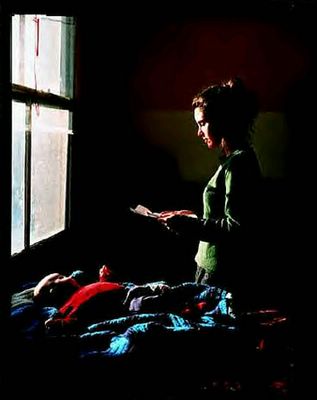
ART/Woodstock
“Foreign Affair”
Through March 27th
“When I consider...the small space I occupy, which I see swallowed up in the infinite immensity of spaces of which I know nothing and which know nothing of me, I take fright and am amazed to see myself here, rather than there: there is no reason for me to be here rather than there; now, rather than then. Who put me here?”
- Pascal, “Pensées”
What motivates us to leave home is as diverse as what we encounter along the journey, but dreams of far away lands can often begin with a photograph. The relationship between photography and travel goes as far back as their inceptions.
Expeditions to visually record the far corners of the earth were planned as soon as the development of photography was announced.
Photographers such as Francis Frith, William Henry Jackson, and Timothy H. O’Sullivan (who had a darkroom on a boat) showed us the earliest ‘real’ images of the then unseen and undiscovered wonders of the world.
Soon followed two firsts which simultaneously opened the world to us further. In the 1880s, while George Eastman invented roll film and the box camera, the combustion engine was ignited, rendering photography and global travel accessible to middle class and working class families.
Seeing and portraying the world firsthand was no longer reserved for the privileged elite. Tourists were photographing the great pyramids as early as 1890.
Today, photographs continue to fuel the tourism industry, but photography and travel have the ability to lead us far beyond glossy brochures.
Departing from the tourist snapshot used to evidence “being there” or to consume place, the artists assembled in “Foreign Affair” focus the camera on the experience of the foreign, exploring our multifaceted relationships to travel, exploration, and dislocation.
From expectations of the new to the confrontation of realities, from the rapture of release in a new environment to the anxiety of estrangement, the work presents a dialogue about transience, elation, loss, and discovery in a world where boundaries are ever shifting.

Shown above: "Girl in the Bus" (1996)
Traveller series I
Cibachrome
Courtesy: White Cube
Tom Hunter
Many travel seeking beauty with the innocence and optimism that there is a better place beyond the one they call home, where a release from the rhythms of our daily routine will allow our problems to melt away.
One glance at that photograph of a swaying palm tree on a beach is all one may need to get packing, but rarely do our actual experiences meet the expectations which a carefully composed, distilled photograph can inspire.
Scott Whittle’s colorful images of sightseers in unfamiliar landscapes mine the gap between our fantasy of exotic travel and its less-than-ideal reality.
We see the sites but also the obligatory omni-present vacationers who have become part of the view.
What is refreshing about Whittle’s images is that in fully encompassing the tourist into their temporal destinies, we move beyond the package tourist mentality and see people interacting with the sublime landscapes that envelop them.
How do we process and understand a new place where the fixed boundaries of the familiar collapse? Language, food, colors, and sounds become unknown fragments overwhelming the senses, while our mind valiantly attempts to create cohesive connections.

Shown above: Untitled, "Travel Diaries" (2001-2002)
Chromogenic, B/W prints
Fred Cray
Courtesy: Janet Borden, Inc.
Fred Cray’s dense travel diary montages evoke a virtual experience of the dizzying layers that can disorient the traveler upon arrival in a new place.
With no memories or previous landmarks, one may find this exhilarating, terrifying, or both.

Shown above: "Red" (2002)
13x17x6"
Mixed media (photograph with embedded stitches, top, yellow thread, red silk)
Priya Kambli
In contrast to the dislocating feeling of estrangement in Cray's work, Priya Kambli’s “Suitcase” series inverts displacement by carrying the idea of home abroad.
Inspired by the experience of cramming her belongings into one suitcase when she emigrated to the U.S. from India in 1993, Kambli’s suitcases remind us of the self we carry within no matter the geographic location and the memories we allow to escort us as loyal companions through transformation.
Brent Phelp’s sweeping landscapes paired with original writings from Lewis and Clark’s journal literally carries the viewer on a fascinating historical voyage, to a time when the world was still “new” and yet to be explored.
In this remake, the images inform our understanding of history and move us into the mindset of explorers seeing these sights for the first time.
Walter Martin and Paloma Muñoz’s collaborative images of snowglobes containing figures in transit. In this series of photographs, Martin and Muñoz subvert the cheerful conventions of the snowglobe with dark ruminations.
The typical snowglobe winter wonderlands are supplanted by desolate and sometimes sinister snowscapes. Forests of dead trees are traversed by solitary figures laden with suitcases.

Shown above: "Traveler XXXIII" (2003)
C-print on plexiglass
Paloma Muñoz, Walter Martin
Courtesy P.P.O.W., NYC.
The characters seem dressed for a more civilized sort of commute, their business attire ill suited for wading through deep snow and biting cold. It seems as if they were collectively caught off guard by some series of events and forced from their familiar habitat into a harsh and premature exile.
Ultimately it is left to the viewer to speculate about possible narratives. These scenes encased in glass and water each represent an attempt to in some way encapsulate, isolate, and illuminate a certain form of human dread associated with the unexpected and the obvious but often ignored inevitabilities of mortality.
In a sense, the figures in the globes become stand-ins for us; their nomadic isolation a metaphor for our own sense of unknown origins and unknowable destinations.
Departing from the idea of the destination altogether, the artists have framed the journey itself: solitary commuters, wanderers, and the lost attempt to find their way amidst the anxious territory of the unknown and the uncertainty of what lies ahead.

Shown above: "Detail 3," from "The Navigation Project" (1996-2005)
Archival inkjet print
20x20 inches
Vicki Ragan
In Vicki Ragan's "The Navigation Project," the artist explores travel, the study of space, and the methods man uses to find his way, both physically and spiritually.

Shown above: "Woman Reading a Possession Order" (1997)
Life and Death in Hackney series
Cibachrome
Courtesy: White Cube
Tom Hunter
Tom Hunter’s "Traveller" series was created over a two-year jaunt through Europe in a double-decker bus. His detailed portraits of the domestic environments of a contemporary nomadic group express his concern with the political issues surrounding the rights of squatters, ravers, travellers and other people and communities viewed as outsiders.
Not rooted by the geographical and cultural conventions of traditional community, these modern-day gypsies are viewed as ‘others’ based on their lifestyle choices and priorities that keep them on the move.
In comparison, Soon-Mi Yoo’s video, “Isahn,” brings to light the extreme challenges faced by people and cultures forced into exile due to political unrest and conflict.
Exploring issues of loss and alienation, Yoo recreates the experience of displaced North Koreans looking through tourist stereoscopes near the North/South Korean borders as they view images of a country they can no longer return home to.
Crossing borders to make a new beginning, they must negotiate a conflicting state of non-belonging and learn to assimilate the new and simultaneously preserve their uprooted culture while coping with the pain of separation.
Finally, what has often propelled us forward into uncharted terrain is the quest for knowledge and the idea that enlightenment could be within our reach. Vicki Ragan’s iconic imagery of astronomical charts, moonscapes, and explorers awakens longing, wanderlust, and the elation of discovery.
A transient position affords us a unique perspective and can expand our understanding of how we know the world. The artists in “Foreign Affair” reveal that photography and travel share the ability to shift the frontiers of perception, empowering us to see beyond the confines of the world as we know it.
“Should the chosen guide be nothing more
than a wandering cloud, I cannot lose my way.”
– Wordsworth
(Via exhibit curator Kate Menconeri, 2005)
Stories: Artist commentaries on the works in “Foreign Affair”
“Isahn”/Soon-Mi Yoon: In October 5, 2001, I heard TV news that Mr. Chung, an 82-year-old man originally from North Korea, killed himself after failing to get into the lottery to take part in the family reunion and meet with his family in North Korea.
The split screen in “Isahn” is from the stereoscopes at Imjingak, which is located 30 kilometers from Seoul and borders North Korea.
Tourists and displaced North Koreans can go and drop a few coins in the stereoscopes to look at the government sanctioned photographs of North Korea.
The images from the stereoscopes are mixed with contemporary footage (shot in 1999) of Burmese refugee camps around Mae Sot, Thailand, in which inhabitants are forced to relocate to yet another anonymous site.
For those who are not allowed to go back home, the sights of exile are just ersatz landscapes. Sometimes they may offer consolation. Often times they work as hindrance. Many would say, “When I close my eyes, I can still see my hometown so vividly”.
“Travel Diaries”/Fred Cray: This work is about literal and metaphorical travel, simultaneity and the accumulation of meanings. Controlled chance is an element in gathering the images, but in this series I use a much higher percent of what I photographed than in any other work I do.
The work reflects the difficulty of thinking and of accumulating thoughts to form a coherent whole. Most of all, the work is about looking and seeing in a visually loaded world.
“Red”/Priya Kambli: My work has constantly dealt with issues of journey and memory. I integrate traditional photography with digital media as well as elements of mixed media and installation.
In an essay of [my] work, one critic notes that "The particulars of (these pieces) are all simply props on a stage where our own memories must take on the role of actors. We are asked to imagine first the millions who set forth in this world leaving their homes and their families or bearing them with them. But we are moved by stages to consider our own losses, the bridges we have crossed, and the ones we burned behind us as we went."
When I moved to America in 1993, I crammed 18 years of my life into one suitcase. It weighed approximately 45 kg. It wasn't until recently that I started thinking about the objects I chose to bring and their selection process.
The objects were chosen for their magnetic ability of attracting and repelling memories.
The status of these chosen objects increased substantially to the level of sacred relics for having being touched or given by a loved one, etc. These souvenirs contain within them the ability to vividly conjure memories of the past.
Distilling ones life to fit the finite parameters of a suitcase meant editing -- the inevitability of certain memories being discarded while others attain a new significance.
It further implied simplification of ones past, untangling the chaotic web so that a clear succinct pattern emerged.
In the “Suitcases” series, I am interested in juxtaposing snippets of information that interact with each other to convey an open ended narration.
The essence of the “Suitcases” series is the dialogue created by pairing of fragments. The items contained within the suitcases are sticky with associations and often pertain to travel. Each suitcase deals with a separate theme and corresponds to a specific hue.
Color is the origin of each piece, giving each suitcase its individual personality and focus by dictating the objects it contains and their relationships. Even though the suitcases are self-contained and conceived to function independently, they all share many physical and conceptual characteristics.
"Traveller" series/Tom Hunter: The series was taken over a two-year period, in which time I was living and traveling in a double decker bus I had bought with a friend. We traveled in Europe from Portugal to the Czech Republic.
At this time, there was an underground techno sound system movement traveling in Europe putting on free parties and festivals. The underground dance culture, which started in the UK in the late eighties, following on from the US house music scene, became threatening to the British establishment, as nearly all the music events raves were held outside the established club culture.
Finally, the British government decided to outlaw such events, however small, and the lifestyles of groups of squatters and travelers. Once the law came into effect in 1994, large groups of travellers moved to Europe to continue their lifestyle and promote their culture.
The pictures I took during this period are of my friends and fellow travelers, in different parts of Europe as they traveled between festivals and raves.
The spaces are their homes, vehicles recycled into new traveling homes, old lorries, buses, and coaches. They were meant to be an antidote to the very negative images that were being published by the press, which were nearly always in black and white and very grainy, making the subjects into victims of society or criminals and other than the viewer.
My pictures are very colorful and try to show the humanity and the dignity of the subjects. By working with a large format camera and tripod, my subjects become collaborators in the artistic process. They had a say in the way they were viewed by the outside world, hopefully changing the way they are perceived in society.
"The Navigation Project"/Vicki Ragan: These images are photo collages assembled from maps, charts, NASA images, details of historic aircraft, and silhouettes of human figures.
Travel, the study of space, and the methods man uses to find his way, both physically and spiritually, are among the themes explored.
Although the images in this exhibition are printed digitally, they were created the old-fashioned way, with a pair of scissors. The figures were cut out of bits of map, placed on another image, and re-photographed. Each final image is derived from a single black-and-white negative.
Shown/header image: Detail, “Isahn” (2004)
Single channel video DVD
16min30sec
Soon-Mi Yoon
Find it: The Center for Photography at Woodstock
59 Tinker Street
Woodstock, NY 12498
Get info: (845) 679-9957
Find art events in other cities, in the FEB/MAR 2005 of "Arte Six."

<< Home